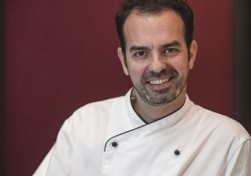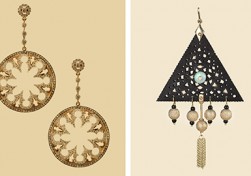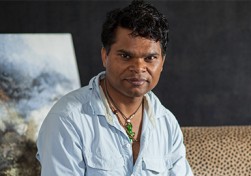Oscar Portal is the innovative head chef at The St. Regis Mexico City, where he oversees six restaurants, from the King Cole Bar to private dining. Prior to moving to Mexico, he was pivotal in transforming the gastronomy scene in Madrid, while one of his first projects at St. Regis was creating a refined fish-and-chips pop-up called Krug & Chips.
What do you eat when you’re home alone? Because I cook so much at work, when I’m at home I often eat takeaways: pepperoni pizza, cheeseburgers, sushi, and Chinese dishes like vegetable spring rolls, rice soup and dumplings. If I cook, it’s only because my two-and-a-half-year-old son has to eat well. What I eat is not good for my health!
What would you order from your own menu? Clarified chicken broth or fish broth, then short-rib glaze [roasted short ribs] followed by Parmesan ice cream.
What is your favorite dish to cook? Anything with fish or seafood. These dishes are a real challenge to cook, because their taste – particularly turbot – is so delicate.
Any local food that particularly inspires you? There’s a really spicy dish I love from the coast of Mexico called aguachile – thinly sliced shrimps, lime and vegetables, which can be cooked in different sauces. I also like mole, an ancient Mexican sauce that’s really complicated to make; some recipes use over 100 ingredients.
The proudest moment in your career? The first was when I was working in a restaurant called Pinera in Madrid and the newspaper El Mundo voted us Restaurant of the Year in 2010. Considering how many restaurants there are in Madrid, this was a huge achievement. The second was moving to Mexico City and becoming executive chef at St. Regis.
Which dish are you most proud of? Smoked eel salad with tomato gel, watermelon and prunes. It’s molecular cuisine; I created it at Pinera in Madrid and it’s as beautiful as it is tasty.
The most delicious thing to eat in Mexico City? Taco al pastor. You can find it in local taquerias, but it’s best bought as street food. You should buy it the minute you arrive. For simple, tasty food, there’s nothing better. I particularly like the corn tortillas filled with marinated pork, curry sauce, onion, pineapple and coriander.
Which meal would you have again, if you could? One I had with my wife when she was pregnant with our first son. We’d been apart – I was working in Mexico while she was at home in Madrid – and we reunited in San Sebastian during Holy Week at [our friend] Martin Berasategui’s restaurant. We ate lobster salad, hake in green sauce and chocolate mousse. It was one of the best meals of my life.
The secret to running a restaurant? There’s no magic formula, but you do need to make sacrifices: you work long hours and you give up holidays. If you don’t love it, there’s no future.
What was your favorite food as a child? A soup my mother used to cook, cocido madrileño, and my grandmother’s meatballs. I could eat these foods every week and never get tired of them.
What reminds you of home? Every Saturday, my whole family gathers around my mother’s table. I go home twice a year and we still do it. Sitting around that table makes me feel like a boy again, and brings back memories of helping my grandmother in the kitchen when I was little.
Your address: The St. Regis Mexico City










